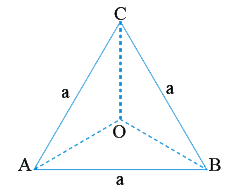Let be a given triangle. If for any ,then is
Equilateral
Right angled
Isosceles
None of these
The correct Answer is:B
To solve the problem, we need to analyze the given inequality involving the vectors in triangle ABC. We are given that:
|→BA−t→BC|≥|→AC|
for any t∈R. We want to determine the nature of triangle ABC.
Step 1: Rewrite the vectors
First, we can express the vectors in terms of their components. The vector →BA can be written as →A−→B and →BC as →C−→B. Thus, we have:
→BA−t→BC=(→A−→B)−t(→C−→B)=→A−(1−t)→B−t→C
Step 2: Analyze the magnitude
Now we need to analyze the magnitude of this vector:
|→BA−t→BC|=|(→A−(1−t)→B−t→C)|
Step 3: Apply the triangle inequality
Using the triangle inequality, we can state that:
|→BA−t→BC|≥|→AC|
This implies that the distance between points A and the line formed by points B and C is at least the length of AC.
Step 4: Consider the case when t=1
Let's consider the case when t=1:
|→BA−→BC|=|→BA−→C+→B|
This simplifies to:
|→BA−→BC|=|→A−→C|
Step 5: Set up the quadratic inequality
Now we can set up the quadratic inequality based on the condition given. The expression |→BA−t→BC| can be squared to yield:
|→BA−t→BC|2≥|→AC|2
Expanding this, we get:
|→BA|2−2t(→BA⋅→BC)+t2|→BC|2≥|→AC|2
Step 6: Formulate the discriminant
This forms a quadratic in t:
t2|→BC|2−2t(→BA⋅→BC)+(|→BA|2−|→AC|2)≥0
For this quadratic to hold for all t, the discriminant must be less than or equal to zero:
D=(−2(→BA⋅→BC))2−4|→BC|2(|→BA|2−|→AC|2)≤0
Step 7: Analyze the discriminant
This leads us to:
4(→BA⋅→BC)2−4|→BC|2(|→BA|2−|→AC|2)≤0
Dividing through by 4, we have:
(→BA⋅→BC)2≤|→BC|2(|→BA|2−|→AC|2)
Step 8: Conclusion
The condition implies that the angle C must be 90∘ (since the sine of the angle must be 1), indicating that triangle ABC is a right triangle.
Final Answer
Thus, triangle ABC is a right-angled triangle.
First, we can express the vectors in terms of their components. The vector →BA can be written as →A−→B and →BC as →C−→B. Thus, we have:
Now we need to analyze the magnitude of this vector:
Using the triangle inequality, we can state that:
Let's consider the case when t=1:
Now we can set up the quadratic inequality based on the condition given. The expression |→BA−t→BC| can be squared to yield:
This forms a quadratic in t:
This leads us to:
The condition implies that the angle C must be 90∘ (since the sine of the angle must be 1), indicating that triangle ABC is a right triangle.
Thus, triangle ABC is a right-angled triangle.
Topper's Solved these Questions
Similar Questions
ABC is an equilateral triangle. Length of each side is 'a' and centroid is point O. Find

If ∣∣∣−−→AB+−−→BC+−−→AC∣∣∣=na then n = ?View SolutionIf ABCD is a quadrilateral, then −−→BA+−−→BC+−−→CD+−−→DA=
View Solution△ABC is an isosceles triangle with AC = BC. If AB2=2AC2 . Prove that △ABC is a right triangle.
View SolutionOrthocenter of an equilateral triangle ABC is the origin O. If −−→OA=→a,−−→OB=→b,−−→OC=→c, then −−→AB+2−−→BC+3−−→CA=
View SolutionA, B, C, D are four points in the space and satisfy ∣∣∣−−→AB∣∣∣=3,∣∣∣−−→BC∣∣∣=7,∣∣∣−−→CD∣∣∣=11and∣∣∣−−→DA∣∣∣=9. Then find the value of −−→AC⋅−−→BD.
View SolutionGiven that P=Q=R. If →P+→Q=→R then the angle between →P and →R is θ1. If →P+→Q+→R=→0 then the angle between →P and →R is θ2. The relation between θ1 and θ2 is :-
View Solution△ABC is an isoscles triangle with AB= AC= 13 cm and the length of altitude from A on BC is 5 cm, find BC.
View SolutionIn a parallelogram ABCD. Prove that −−→AC+−−→BD=2−−→BC
View SolutionIn △ABC,P is any point inside a triangle such that area of △APB,△BPC, △CPA are equal.If the line AP cuts ¯¯¯¯¯¯BC at M such that area of △PMC is 4.5 sq units.Then area of △ABC is
View SolutionIf I is the centre of a circle inscribed in a triangle ABC, then ∣∣∣−−→BC∣∣∣−→IA+∣∣∣−−→CA∣∣∣−→IB+∣∣∣−−→AB∣∣∣−→IC is
View Solution
